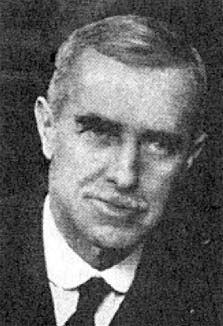


 تاريخ الرياضيات
تاريخ الرياضيات
 الرياضيات في الحضارات المختلفة
الرياضيات في الحضارات المختلفة 
 الرياضيات المتقطعة
الرياضيات المتقطعة
 الجبر
الجبر
 الهندسة
الهندسة 
 المعادلات التفاضلية و التكاملية
المعادلات التفاضلية و التكاملية 
 التحليل
التحليل
 علماء الرياضيات
علماء الرياضيات |
Read More
Date: 14-5-2017
Date: 3-5-2017
Date: 26-4-2017
|
Born: 8 September 1876 in Edinburgh, Scotland
Died: 30 May 1943 in Speyside, Scotland

Anderson McKendrick's parents were Mary Souttar and John Gray McKendrick. John McKendrick was a physiologist who, at the time Anderson was born, was Professor of Physiology at Glasgow University. His most famous works are Life of Helmholtz (1899), and Text Book 0f Physiology, 2 Volumes (1888, 1889). Anderson had a brother, two years his elder, who became a physician in Glasgow. Both brothers and their father were fellows of the Royal Society of Edinburgh.
McKendrick trained to become a medical doctor at the University of Glasgow and graduated MB ChB in 1900. He studied embryology, physiology, and anatomy in Jena. As a military man, he served in Somaliland in 1903-04 when British forces tried to put down the armed resistance against colonial forces led by Mohammed Abdullah Hassan who was fighting for a united Muslim Somalia. He worked at the Research Department of the Government of India from 1905 to 1920 and from 1914 to 1920 was Director Pasteur Institute, Kasauli. During this period he rose to the rank of Lieutenant Colonel. Although based in India at this time, he returned to Scotland on leave for various periods and during these he studied physical chemistry in Glasgow under Soddy in 1907, and mathematics in 1913 under Professor MacDonald at Aberdeen.
In 1920 McKendrick came to Edinburgh as Superintendent of the Research Laboratory of the Royal College of Physicians. In February 1926 he joined the Edinburgh Mathematical Society. This might seem strange for a medical researcher but his mathematical contributions were, in fact, substantial. F C Hoppensteadt wrote Some influences of population biology on mathematics and in this work mentioned the contributions made by McKendrick:-
A G M'Kendrick (1876 - 1943) rose to the rank of Lieutenant Colonel in the Indian Medical Service and then became Superintendent of the Research Laboratory of the Royal College of Physicians, Edinburgh. In this latter post, he worked closely with the chemist W O Kermack and the mathematicians E T Whittaker and E T Copson. A death notice which appeared in the Edinburgh Medical Journal gives a description of his life and work.
He established that interactions between various types of organisms can be modelled like transport mechanisms in physics, such as fluid flows are. W Feller wrote:-
Much more general and flexible models than the type introduced by Yule (1924) were devised and applied to epidemics and population growth in an unpretentious and highly interesting paper by Lieutenant Colonel A G M'Kendrick [6] (1926). It is unfortunate that this remarkable paper passed practically unnoticed. In particular, it was unknown to the present author when he introduced various stochastic models for population growth in 1939.
Anderson McKendrick was elected to the Royal Society of Edinburgh on 18 March 1912, his proposers being James Oliver, Diarmid Noel Paton, Ralph Stockman, Cargill Gilston Knott.
An obituary, written by W F Harvey, appears in the Royal Society of Edinburgh Year Book 1944, pages 23-24.
After his death the following obituary appeared in The Scotsman:-
Death of Lieut.-Colonel A G McKendrick
The death occurred at Carr Moor, Carrbridge, Inverness-shire, yesterday, of Lieut.-Colonel Anderson Gray McKendrick, M.B., Ch.B., Indian Medical Service. Educated at Kelvinside Academy, Glasgow, Colonel McKendrick will be best remembered as Director of the Pasteur Institute of India (Kasauli), a post he held from 1914 until 1920; as superintendent of the Research Laboratories of the Royal College of Physicians of Edinburgh from 1920 to 1941; and for his mathematical work as medical statistician. Colonel McKendrick was a D.Sc. of Aberdeen University; an F.R.S.Ed., of which Society he was a Council member and vice-president for many years; and an F.R.C.P.Ed. by which College he was awarded the Cullen prize in 1934. Colonel McKendrick was the youngest son of the late Professor John Gray McKendrick, F.R.S., LL.D., Professor of Physiology at Glasgow University. He is survived by his wife, two sons and two daughters.



|
|
|
|
دراسة تحدد أفضل 4 وجبات صحية.. وأخطرها
|
|
|
|
|
|
|
جامعة الكفيل تحتفي بذكرى ولادة الإمام محمد الجواد (عليه السلام)
|
|
|